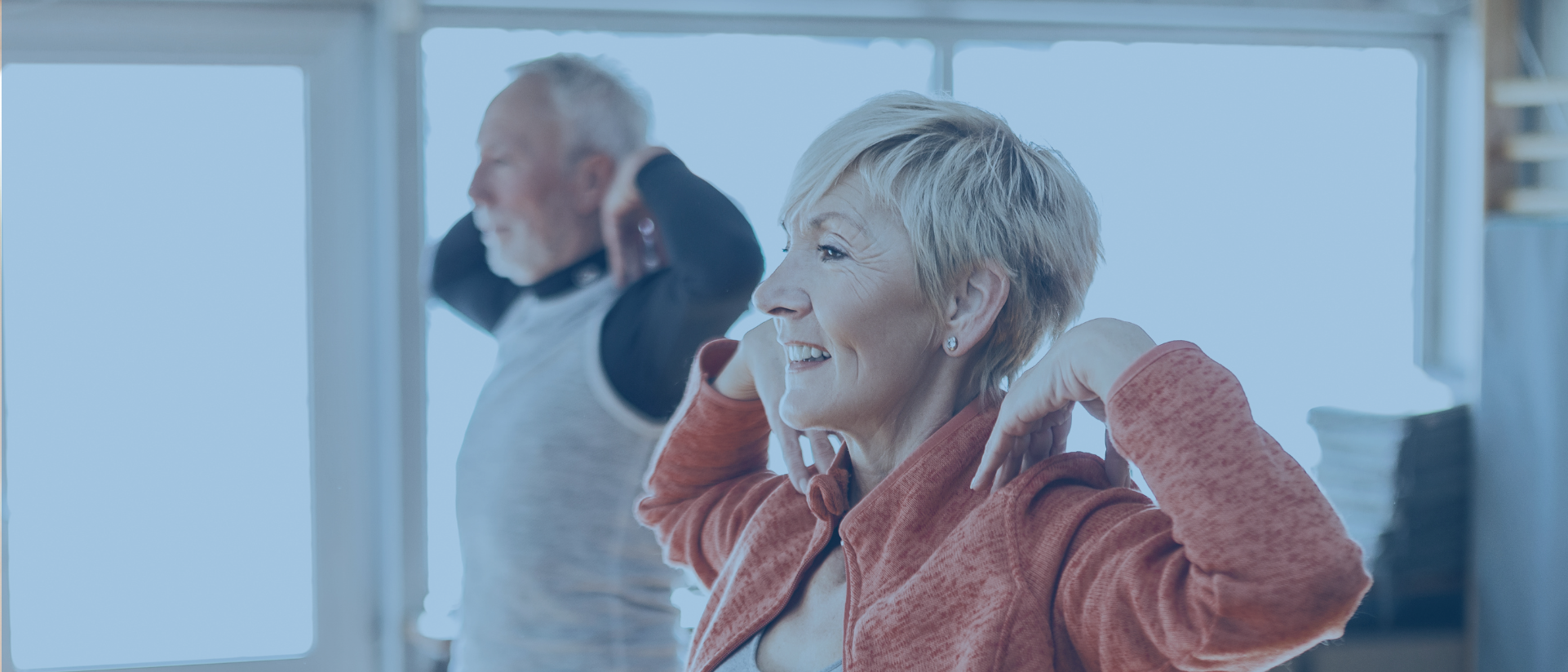03 Jul 5 Exercise Tips for Older Adults
Staying active is one of the best things older adults can do for their health. Regular movement helps support strength, balance, sleep, and overall well-being. But exercise should be safe, comfortable, and tailored to each person’s needs.
Before starting any new activity, it’s important to talk with your doctor. Once you’ve had that conversation, the following tips can help you build a routine that feels both safe and sustainable.
1. Know Your Limits
Listening to your body is key. Some discomfort is normal when you’re working hard, but sharp or lingering pain is a sign to stop and reassess. If a movement causes pain that worsens over time or feels unsafe, talk to your doctor or physical therapist. The goal is to stay consistent, not push through pain.
2. Modify When Needed
If something feels too difficult or uncomfortable, it doesn’t mean you have to stop entirely. Adjustments can often make exercises safer and more effective. For example:
- Use lighter weights or your own body weight if lifting feels too hard on your joints.
- Hold on to a sturdy chair for balance during exercises like calf raises.
- Avoid using a walker for support while exercising, as it may not be stable enough.
If you’re unsure how to adapt a movement, a physical therapist or trained fitness instructor can offer helpful guidance.
3. Warm Up, Cool Down, and Stay Hydrated
Preparing your body before exercise helps prevent injury. Start with light movement, like a short walk, and follow with gentle stretches.
Remember to drink water before, during, and after your workout, even if you don’t feel thirsty. Older adults can be more prone to dehydration, so staying hydrated is especially important.
Give your body time to rest and recover, too. Short breaks during your workout and easy “rest day” activities like stretching or walking can make a big difference.
4. Make It Enjoyable
Exercise doesn’t have to be boring or feel like a chore. Choose activities you enjoy, whether that’s gardening, dancing, water aerobics, or simply walking to your favorite music. Variety keeps things interesting, and mixing in different types of movement, like stretching, balance work, and light strength exercises, helps your body in more ways than one. If you find yourself losing motivation, set a small goal and plan a fun reward when you reach it.
5. Move With a Friend
Exercising with a friend or family member can make it more enjoyable and help you stay consistent. It’s also a good safety measure to have someone nearby in case you need support. Some people find group classes or walking clubs helpful, while others prefer one-on-one companionship.
If you’re caring for a loved one, consider joining in their activity time. It’s a great way to spend time together, and you might benefit from the movement too.
How We Can Help
Our mobile physician team and care professionals understand how important safe movement is for older adults. We help support physical health at home, whether that’s through personalized care plans, guidance around safe activity, or coordinating with therapists and family caregivers.
If you or a loved one needs support with staying active and independent, we’re here to help, starting right where you are.

